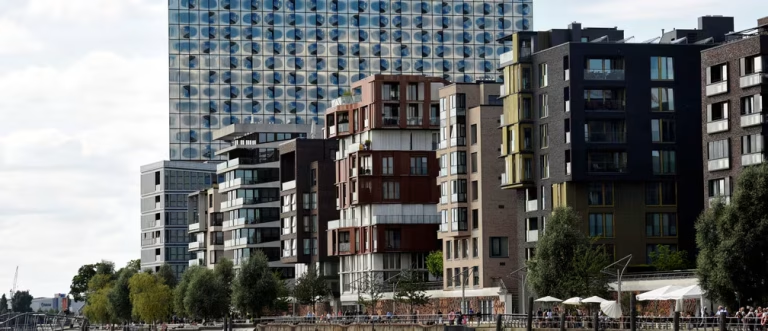The world’s housing markets are moving in wildly different directions — and understanding the global housing trends shaping them is more important than ever. From record-breaking sales in Canada to stalled construction in London, luxury price cuts in Shanghai, and a half-trillion-dollar climate threat in Australia, these shifts reveal how economics, policy, and environment are rewriting the rules of real estate.
Let’s start with Canada — where August brought the highest number of home sales in four years. According to the Canadian Real Estate Association, 40,257 transactions closed last month. That’s a 1.9% jump year over year — and the strongest August since 2021. Even more telling? Sales rose 1.1% from July, marking the fifth straight month of growth. Buyers are clearly returning — drawn by stabilizing rates, renewed confidence, and pent-up demand. For now, Canada’s housing engine is firing on all cylinders.
Meanwhile, in London, the opposite is unfolding. Homebuilding has hit a wall. The Home Builders Federation — a key industry group — warns that planning delays, red tape, and weak buyer incentives are choking new construction. Remember the 2021 London Plan? It aimed for 52,000 new homes. Yet only four boroughs have hit their targets. Worse, planning approvals citywide fell 2% year over year. A major culprit? Safety reviews introduced after the 2017 Grenfell Tower fire. What once took weeks now drags on for over a year — freezing projects and frustrating developers. Without urgent reform, London’s housing shortage will only deepen.
Halfway across the world, Shanghai’s luxury market is feeling the pinch. After nearly two years of growth — even as China’s broader property sector slumped — high-end buyers are vanishing. Sellers are responding with desperation: price cuts of up to 30%. Industry insiders say fatigue has set in. Wealthy buyers, once eager to snap up premium properties, are now waiting on the sidelines. Whether it’s economic uncertainty, tighter capital controls, or simply market saturation, Shanghai’s luxury boom has hit a wall. The correction is sharp — and it’s sending ripples through China’s high-end real estate scene.
Then there’s Australia — where the biggest threat isn’t policy or prices, but the planet itself. A new National Climate Risk Assessment paints a terrifying picture: by 2030, up to A$571 billion in property value could vanish under extreme climate scenarios. Rising seas, fiercer storms, and extreme heat aren’t distant threats — they’re targeting Australia’s most expensive real estate: beachfront suburbs, coastal enclaves, and flood-prone riverfronts. Affluent homeowners may soon find their dream addresses uninsurable — or unsellable. This isn’t speculation. It’s math. And it’s forcing banks, insurers, and governments to rethink everything from zoning laws to mortgage approvals.
What ties these global housing trends together? Volatility. Markets are no longer moving in predictable cycles. Policy missteps in one city trigger supply crunches. Climate risks in another erase decades of appreciation. Investor sentiment shifts overnight. Buyers and builders alike must adapt — fast.
In Canada, the momentum is real — but fragile. One rate hike could stall the rally. In London, bureaucracy is the enemy — and only streamlined approvals can restart the pipeline. In Shanghai, luxury sellers must reset expectations — or sit empty. And in Australia, ignoring climate risk is no longer an option — it’s financial suicide.
The takeaway? Real estate is no longer just about location, price, or square footage. It’s about resilience. Regulatory agility. Environmental foresight. And global awareness.
Whether you’re buying, selling, building, or investing — the global housing trends of 2025 demand more than spreadsheets. They demand strategy. They demand vision. And above all — they demand action. Because in today’s market, standing still is the riskiest move of all.

